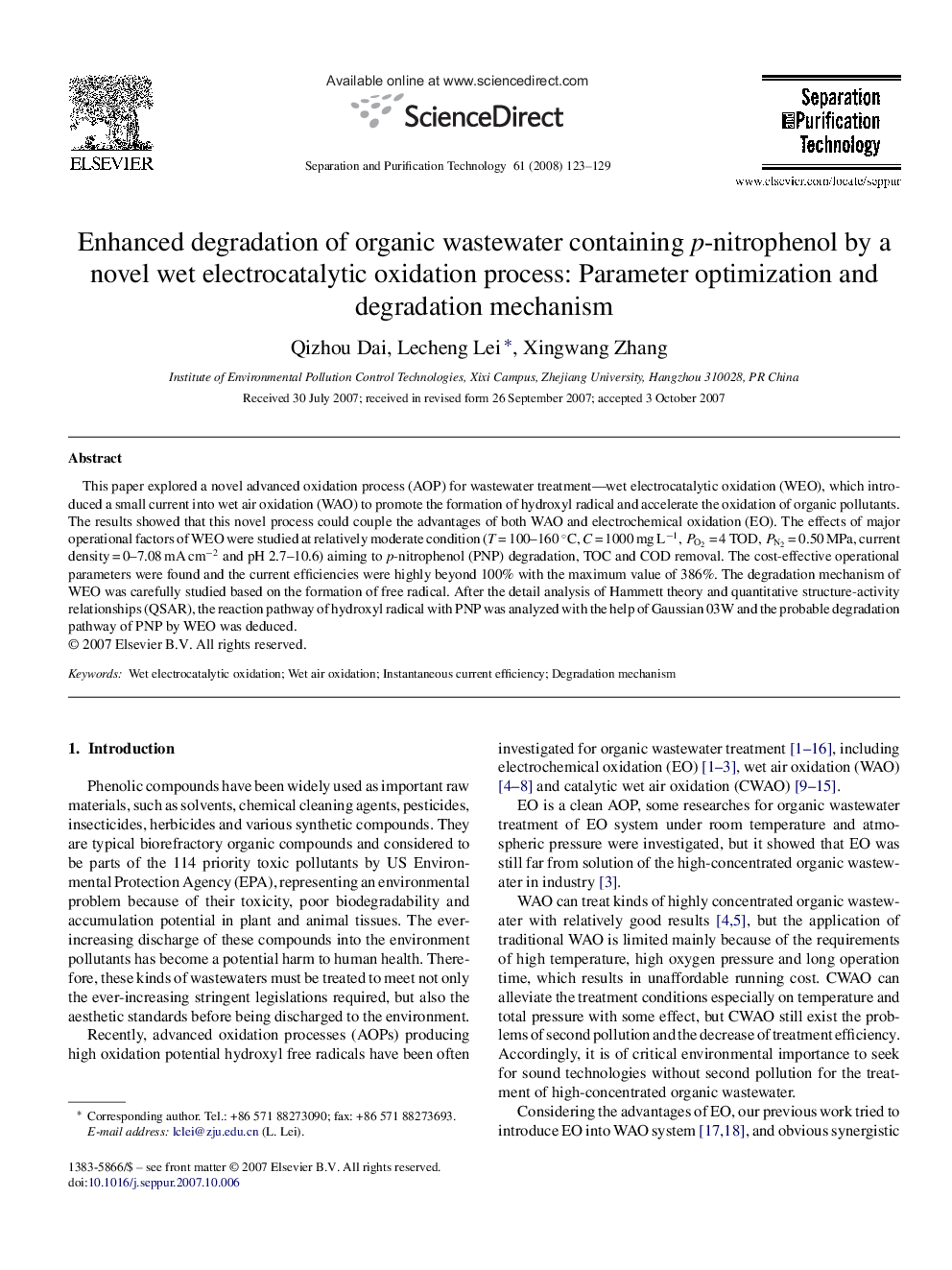| Article ID | Journal | Published Year | Pages | File Type |
|---|---|---|---|---|
| 643602 | Separation and Purification Technology | 2008 | 7 Pages |
This paper explored a novel advanced oxidation process (AOP) for wastewater treatment—wet electrocatalytic oxidation (WEO), which introduced a small current into wet air oxidation (WAO) to promote the formation of hydroxyl radical and accelerate the oxidation of organic pollutants. The results showed that this novel process could couple the advantages of both WAO and electrochemical oxidation (EO). The effects of major operational factors of WEO were studied at relatively moderate condition (T = 100–160 °C, C = 1000 mg L−1, PO2PO2 = 4 TOD, PN2PN2 = 0.50 MPa, current density = 0–7.08 mA cm−2 and pH 2.7–10.6) aiming to p-nitrophenol (PNP) degradation, TOC and COD removal. The cost-effective operational parameters were found and the current efficiencies were highly beyond 100% with the maximum value of 386%. The degradation mechanism of WEO was carefully studied based on the formation of free radical. After the detail analysis of Hammett theory and quantitative structure-activity relationships (QSAR), the reaction pathway of hydroxyl radical with PNP was analyzed with the help of Gaussian 03W and the probable degradation pathway of PNP by WEO was deduced.
